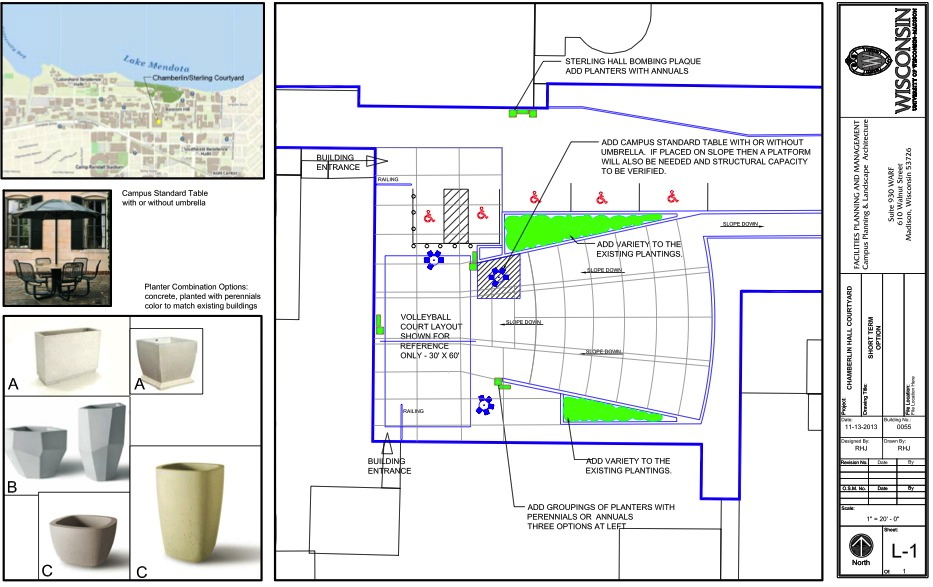Chamberlin Courtyard
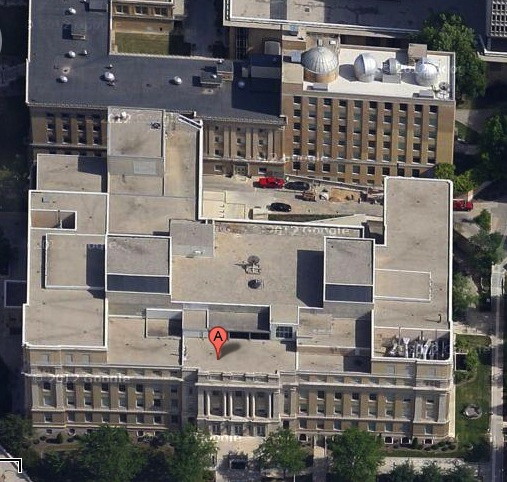
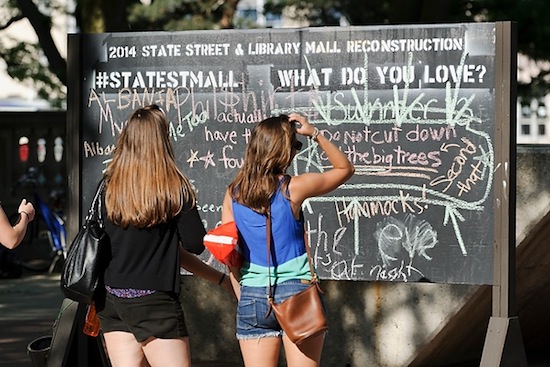
This project will produce a design for the courtyard between Chamberlin and Sterling Hall as an outdoor sustainable instruction and performance space for university use. The project requires an interdisciplinary team of students from the departments in Chamberlin and Sterling plus students in landscape design, art, human ecology, theater and drama, music and architecture.
Inspiration
Get outside – it’s good for you http://www.news.wisc.edu/21889
Ideas
Design a model flexible outdoor instructional space (The Chamberlin Courtyard) for blended learning and traditional use, possibly taking advantage of the sloped roof of the underground auditorium. Include a theatrical stage for theater and drama, music, and performance art productions, physics demonstration shows. As a general assignment instructional space, the theater moves classes out of doors saving energy, promoting environmental awareness - fresh air. The green design serves to model concepts of sustainability.
Suggestions and feedback could be solicited via a blackboard (grab one from Garage!) ala http://www.news.wisc.edu/21868 and also drawn on the courtyard concrete with chalk supplied.
Hammocks (see blackboard image above) https://www.google.com/search?q=hammocks&client=firefox-a&hs=D3D&rls=org.mozilla:en-US:official&source=lnms&tbm=isch&sa=X&ei=UIkjUqq9Ocf-4AOekoCQCA&ved=0CAkQ_AUoAQ&biw=1185&bih=580 . Address use by public.
Solar powered USB ports, power from atop the buildings. Shade - it is difficult to view an iPad in direct sunlight.
Water fountains.
Collect water for neighboring garden. (If not the courtyard, then the roof of CH? BTW, why don't I see any solar heat collectors on the roofs in the image above?)
The historical baryon decuplet of planters could be replaced by quarks and leptons plus vector bosons and the Higgs and Sag A*: an art student project.
Ice skating and volleyball. In Steve Rader's honor, batminton?
Tired of corporate-style blended learning tech-intensive pod remodel designs?
I am gathering information about 21st century *outdoor* learning spaces for higher education. I am interested in designs and best practices for outdoor spaces which morph from self-study to blended learning to large group activities, provide power and wifi access for BYOD mobile devices and for electronic and passive displays, and merge with outdoor informal learning about sustainability. The concept I am considering is part playground, part garden, part theater, part cafe, part conference space and lecture/performance hall, with USB ports and lighting and audio management out of doors in a large university campus environment.
Know any conferences, journal articles, design reports, implementations?
Resources
Re-imagining outdoor learning spaces http://www2.futurelab.org.uk/resources/publications-reports-articles/handbooks/Handbook1187
Design of Outdoor and Environmentally Integrated Learning Spaces, John M. Rafferty http://www.igi-global.com/chapter/design-outdoor-environmentally-integrated-learning/56042
Entering the Interaction Age: Implementing a Future Vision for Campus Learning Spaces, Andrew J. Milne, EDUCAUSE Review, vol. 42, no. 1 (January/February 2007): 12–31, http://www.educause.edu/ero/article/entering-interaction-age-implementing-future-vision-campus-learning-spaces
More educause library papers on learning space design: http://www.educause.edu/library/search?keys=Learningspaces&filters=
Learning Space Design Constituent Group http://www.educause.edu/discuss/teaching-and-learning/learning-space-design-constituent-group?page=2
Rafferty, J.M. (2012) Design of outdoor and environmentally integrated learning spaces. In Keppel, M, Souter, K, & Riddle, M. (2010) (Eds.) Physical and virtual learning spaces in higher education: Concepts for the modern learning environment. Buchan, J., Rafferty, J.M., & Munday, J. (in press) An Investigation into the Enhancement of Blended Learning Environments; toward an effective pedagogy and practice. In Willems, J & Tyan, B. (2012) (Eds) Research in distance and flexible learning. Volume 2: Micro Level Research in Distance and Flexible Learning. IGI Hershey PA
New Generation learning spaces 2013 http://www.designforlearning.com.au/Event.aspx?id=849626
Shaping the future of learning environments: emerging paradigms and best practices, British Architectural Library Catalog, architecture.com, http://riba.sirsidynix.net.uk/uhtbin/cgisirsi/?ps=cg16JTReWu/MAIN_CAT/22970012/9
A resource for designing and sustaining technology-rich informal learning spaces http://learningspacetoolkit.org/
Educause Learning space group http://www.educause.edu/discuss/teaching-and-learning/learning-space-design-constituent-group?page=1
Journal of Learning Spaces (launched 2013!) http://libjournal.uncg.edu/index.php/jls/
A comprehensive learning space evaluation model,
Title: Physical and virtual learning spaces in higher education : concepts for the modern learning environment / Mike Keppell, Kay Souter, Matthew Riddle, [editors].
Learning Space Collaboratory guide http://www.pkallsc.org/. Report: http://www.pkallsc.org/assets/files/LSCGuide-PlanningforAssessing(1).pdf, http://www.pkallsc.org/basic-page/lsc-guide-planning-assessing-21st-century-spaces-21st-century-learners
Photos of the Chamberlin Courtyard Fall 2013
The present courtyard has a vacant sloped roof to an underground traditional auditorium. A fire access concrete roadway leads from Charter St to neigboring gardens
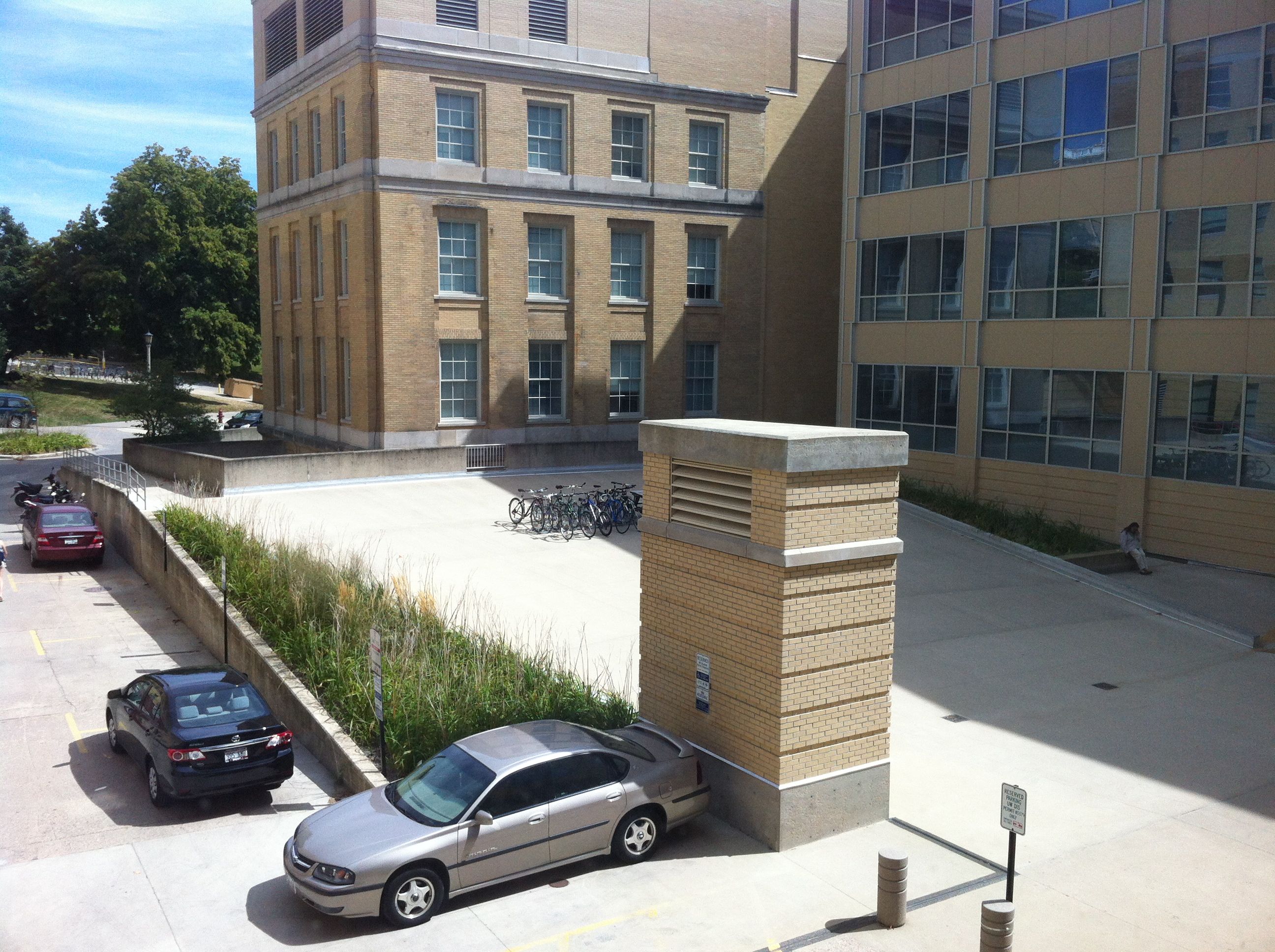
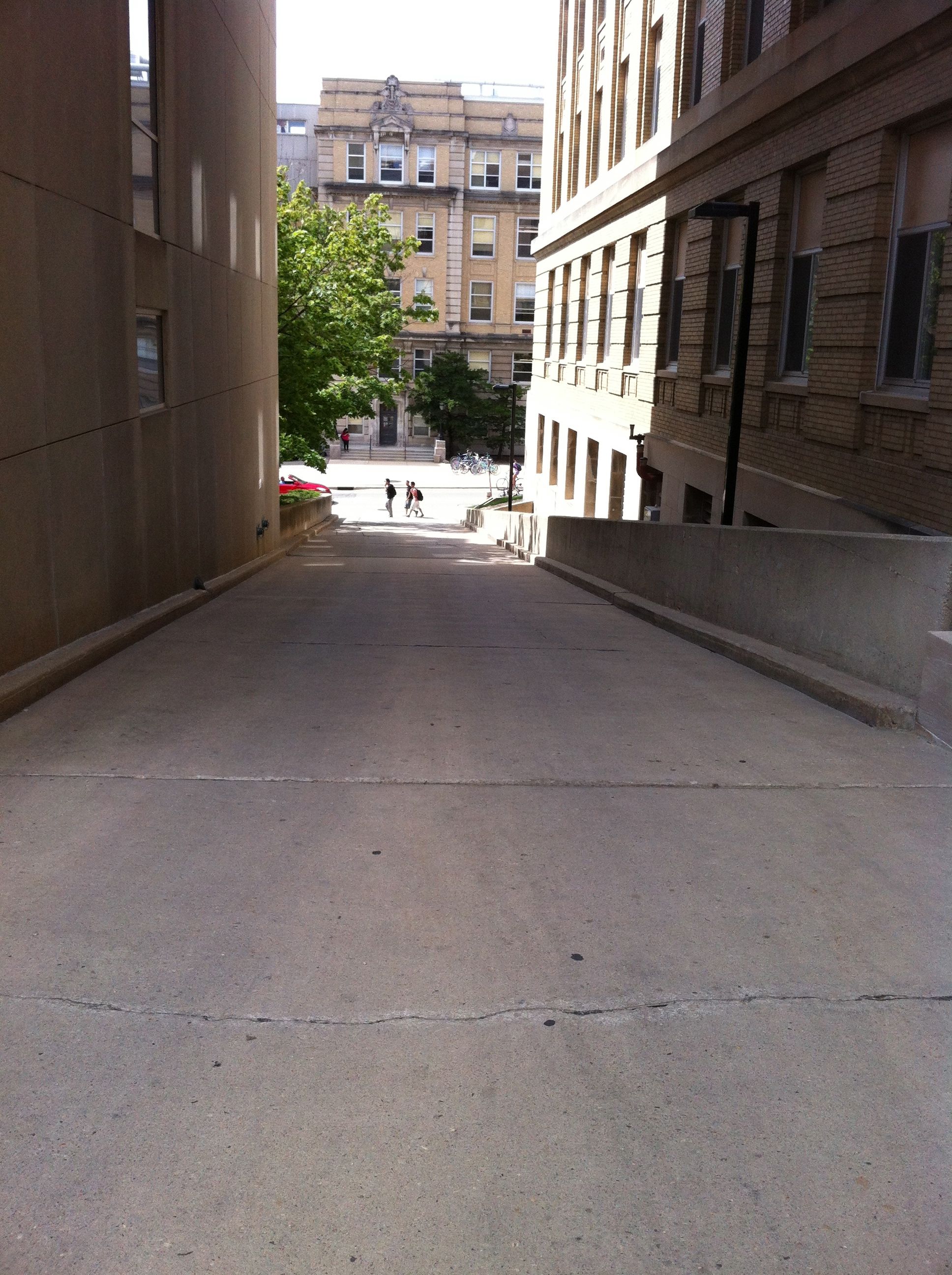
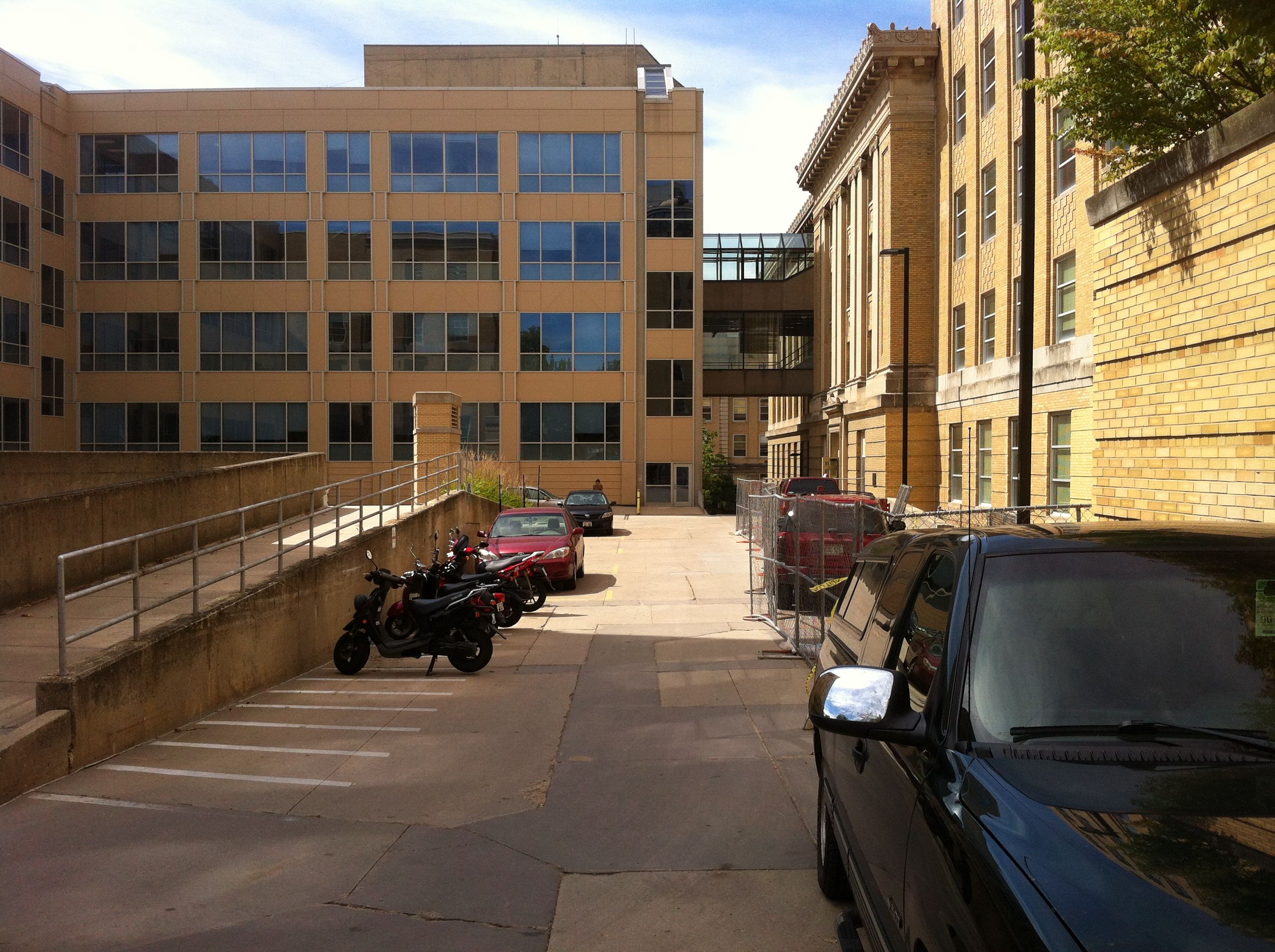
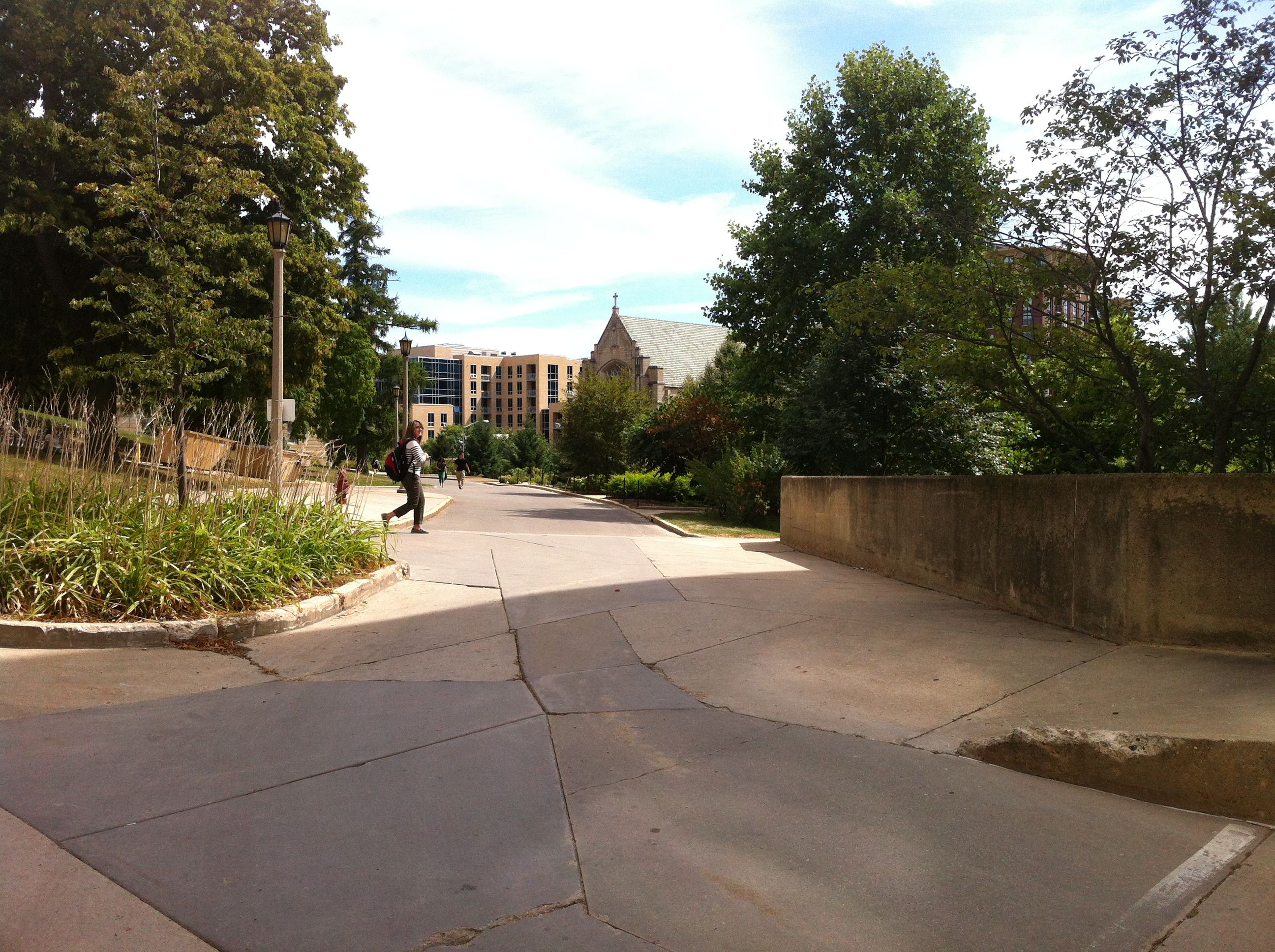
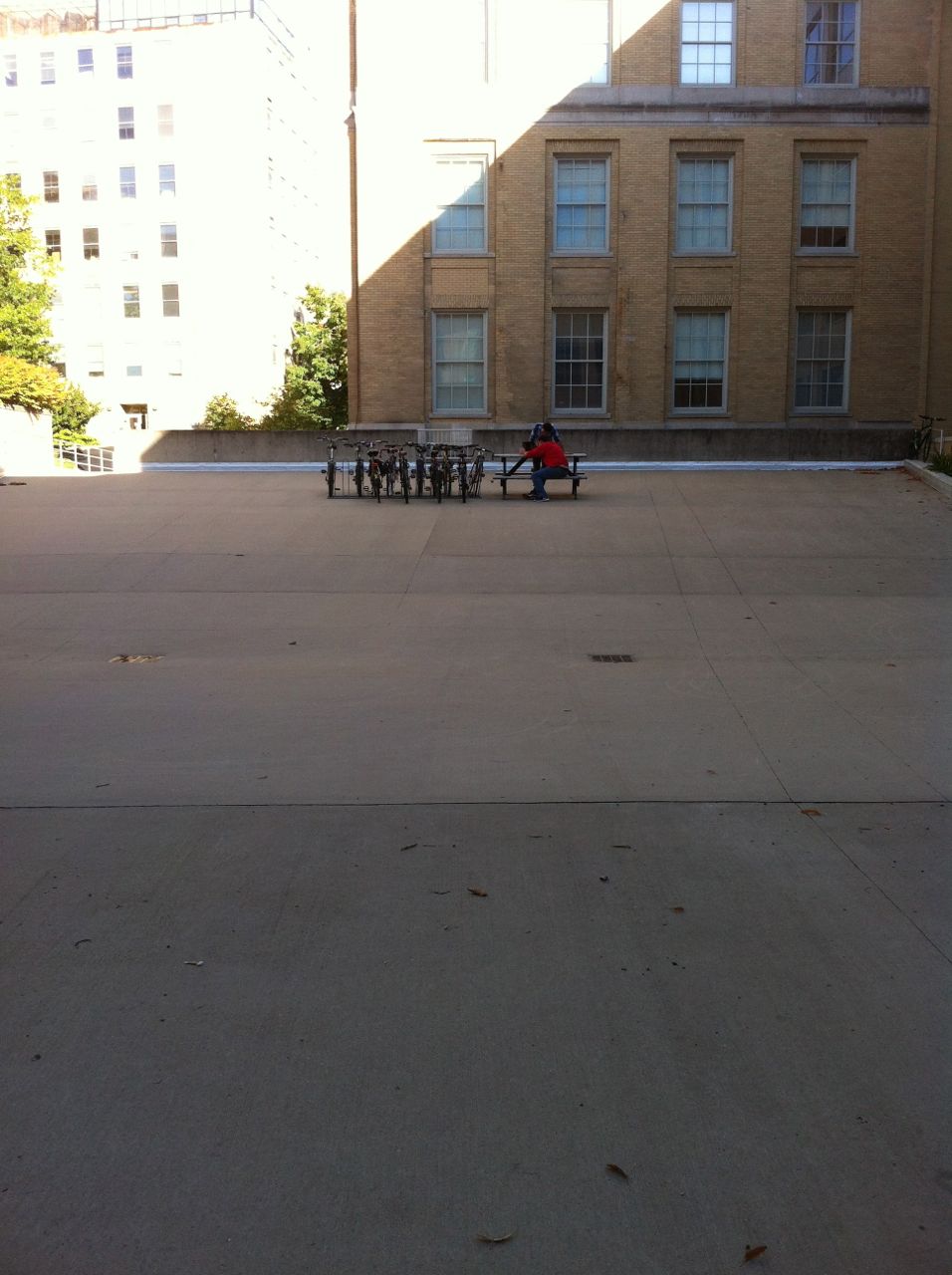
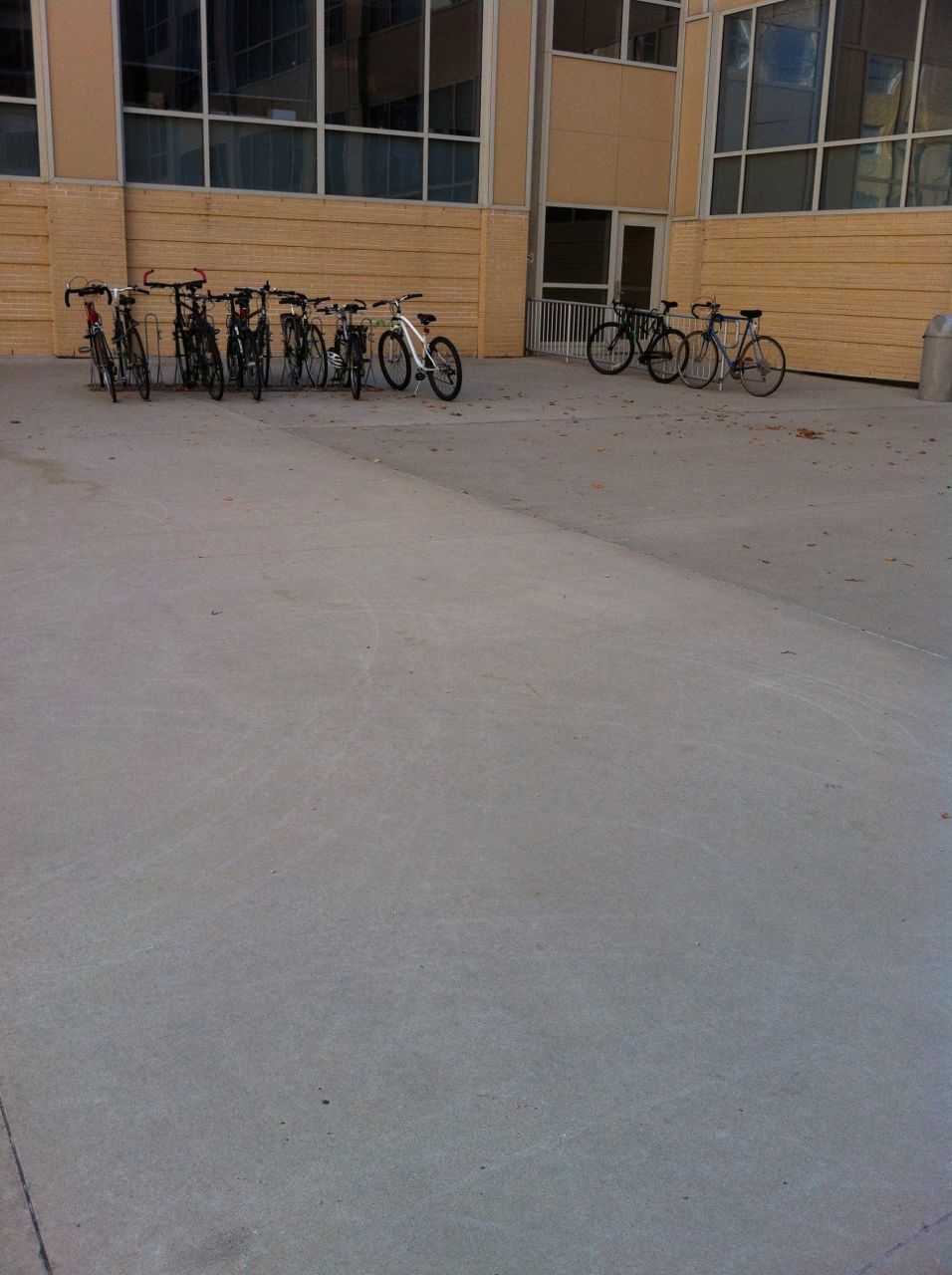
Folklore/classics students want to orate. Amphitheater example from Mike (sorry, I can't get these to display upright!)
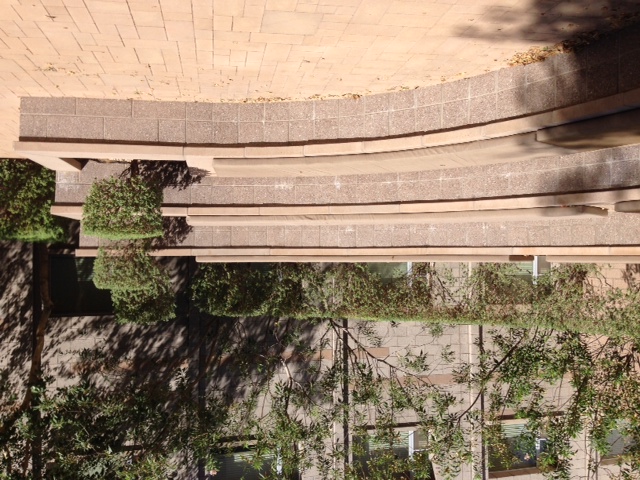
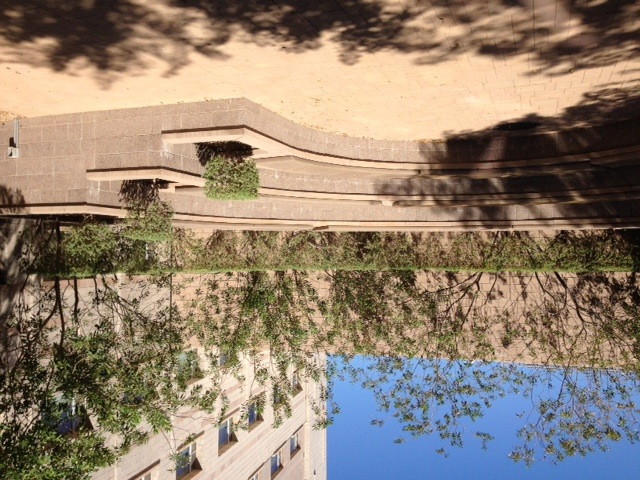
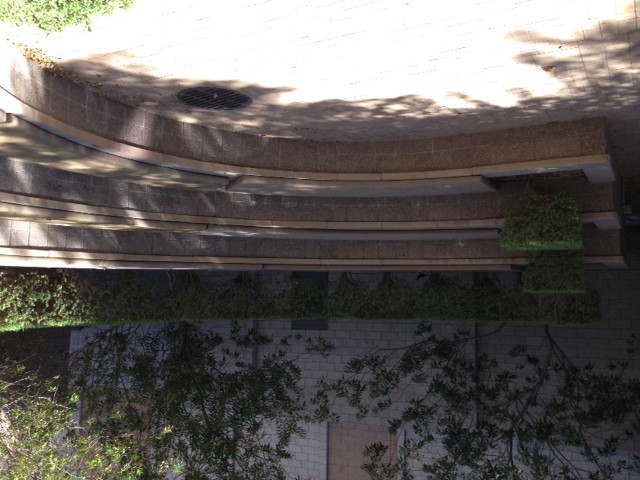
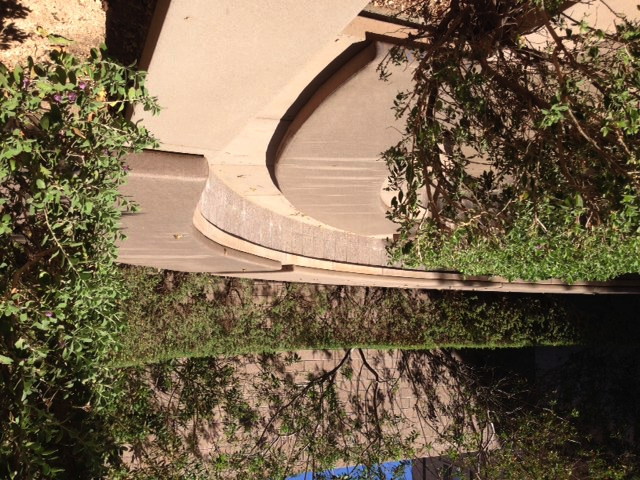
The Elvehjem space shows some elements of mixed use thoroughfare
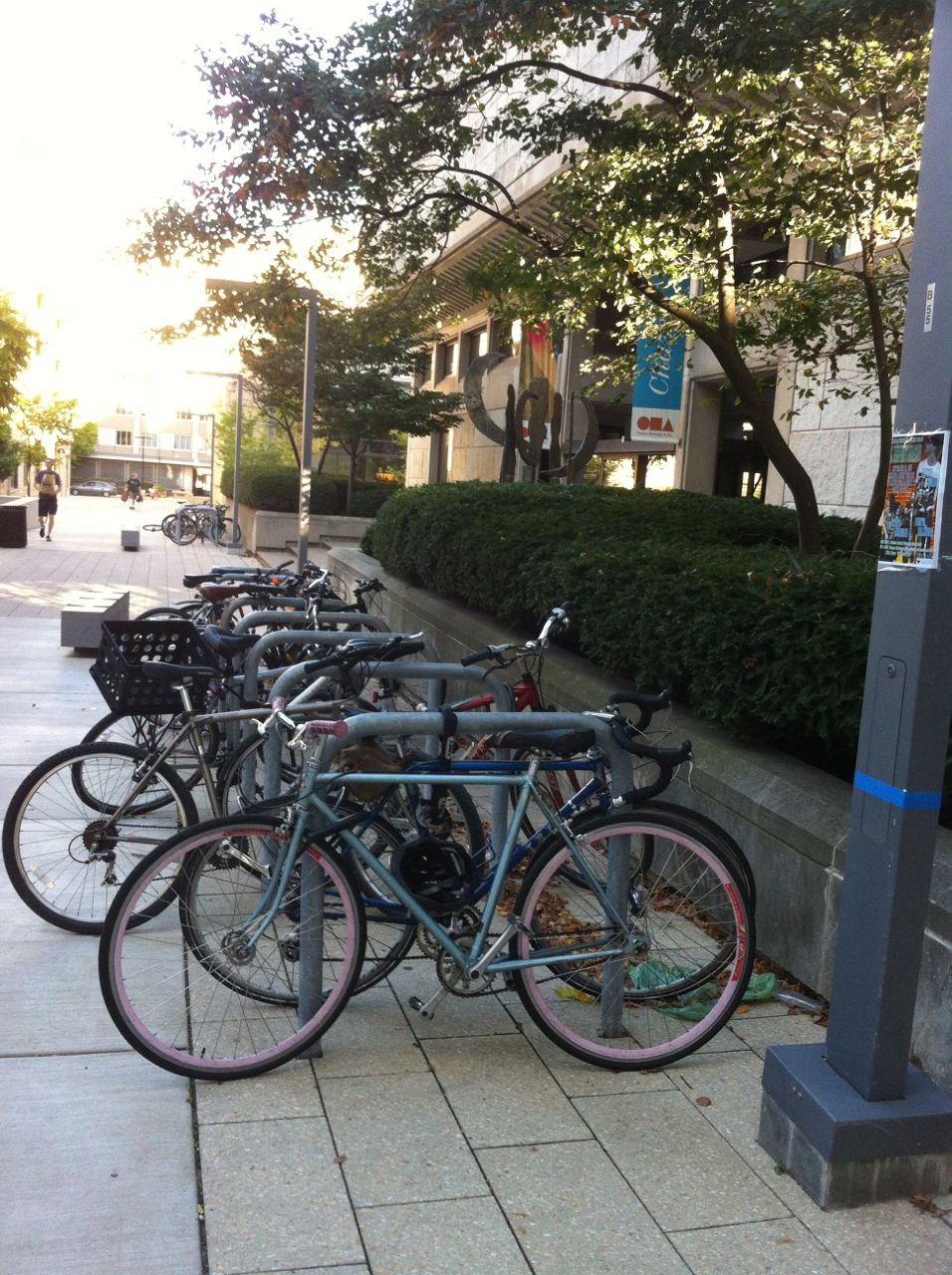
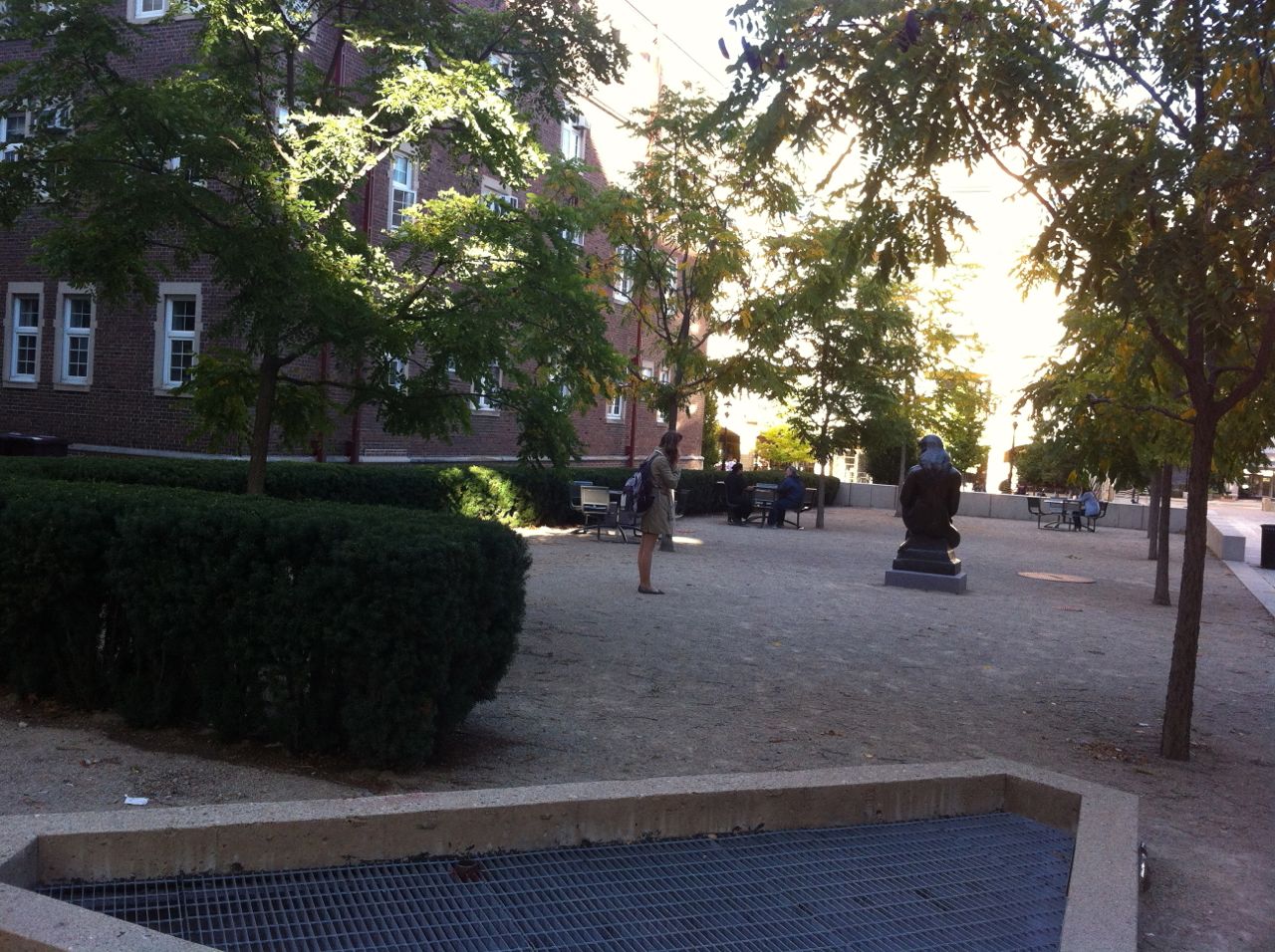
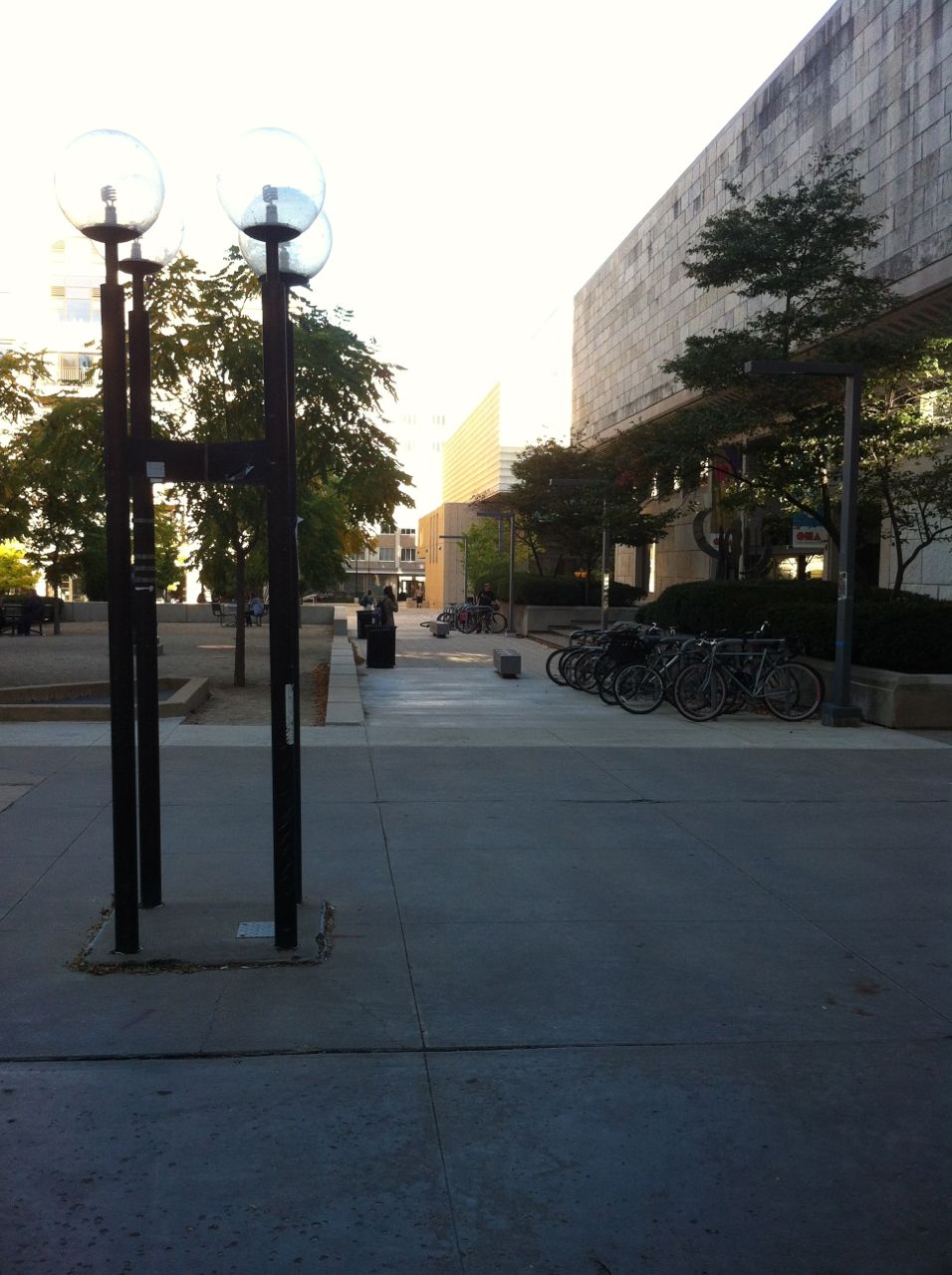
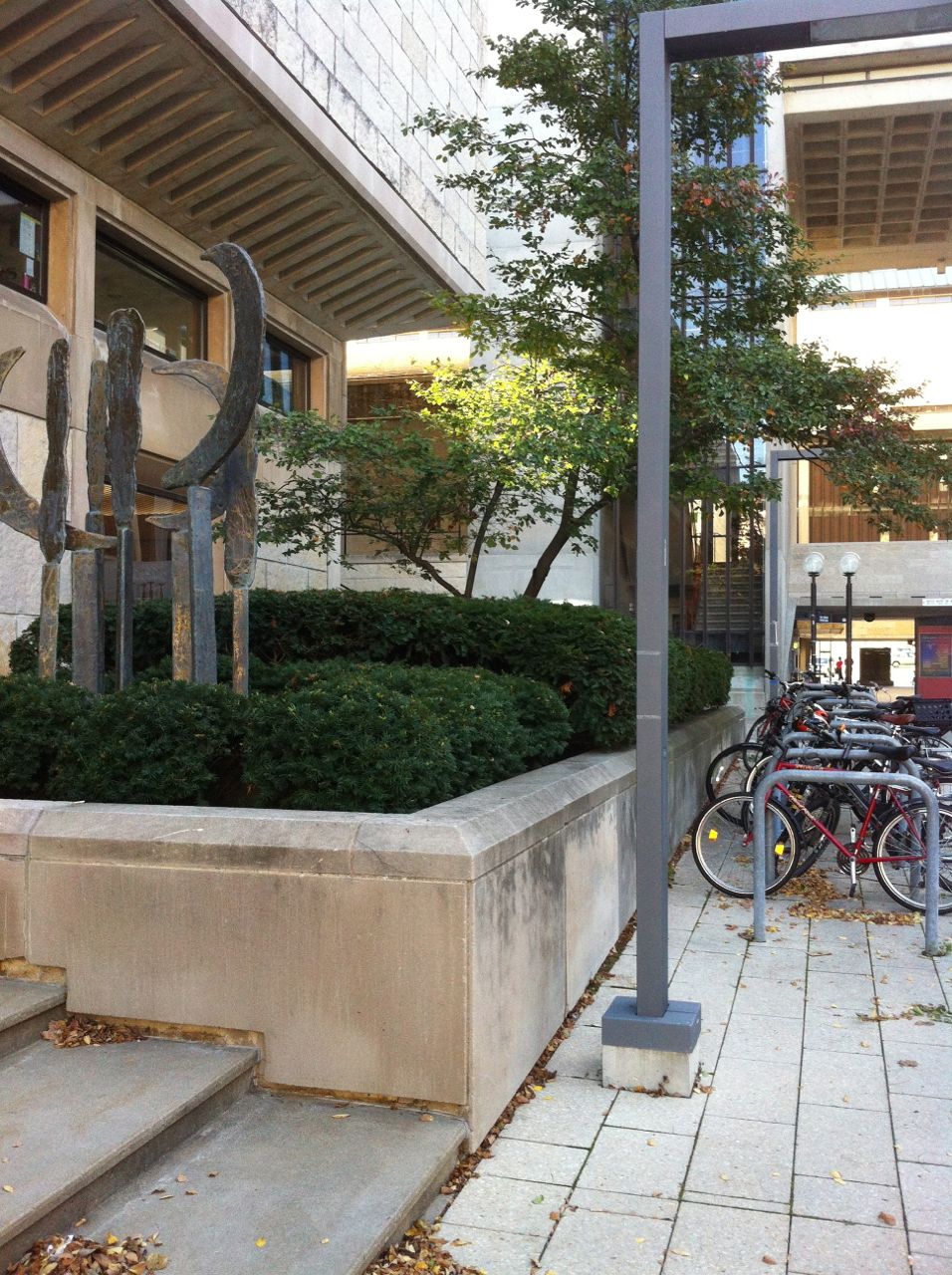
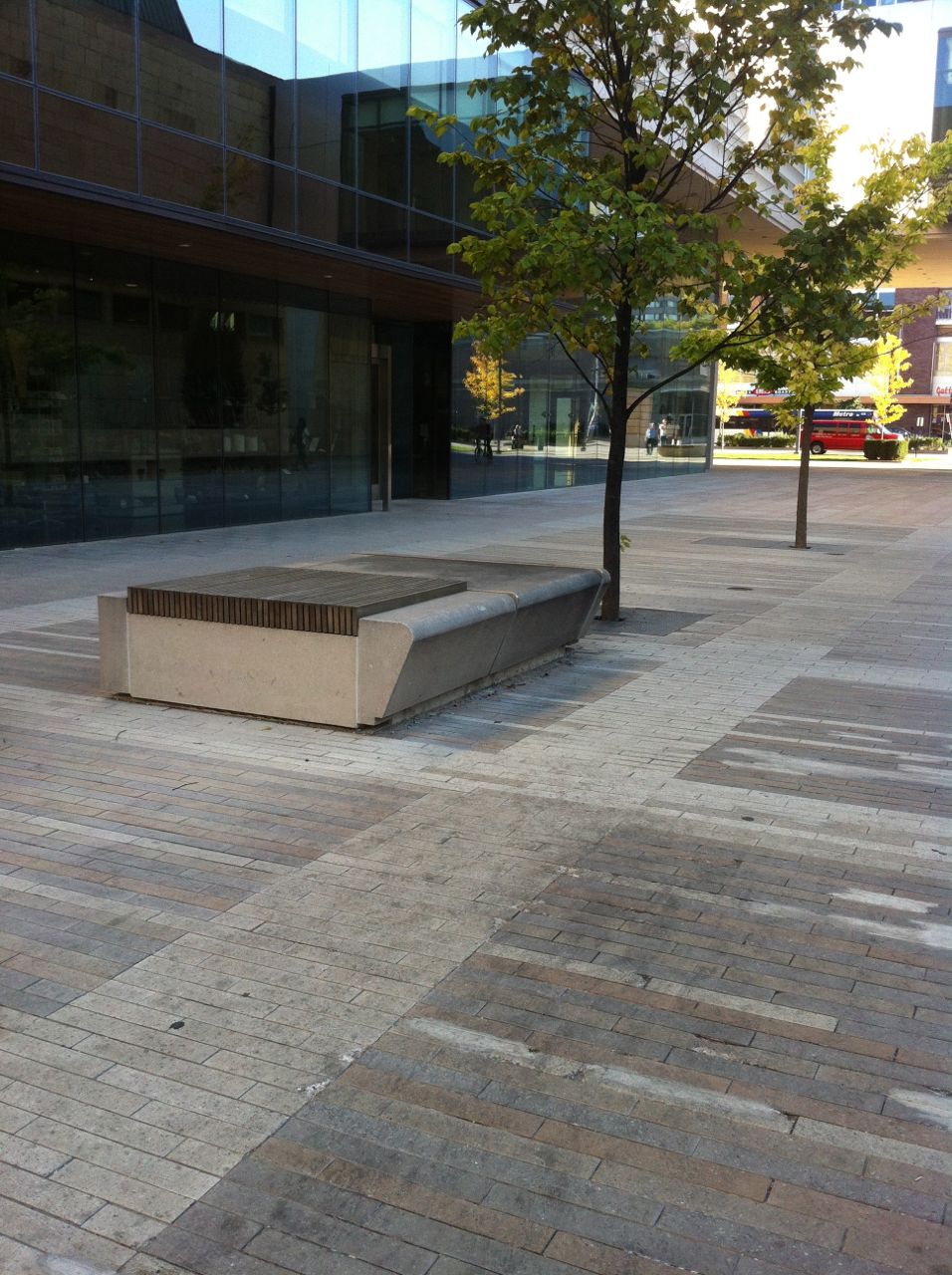
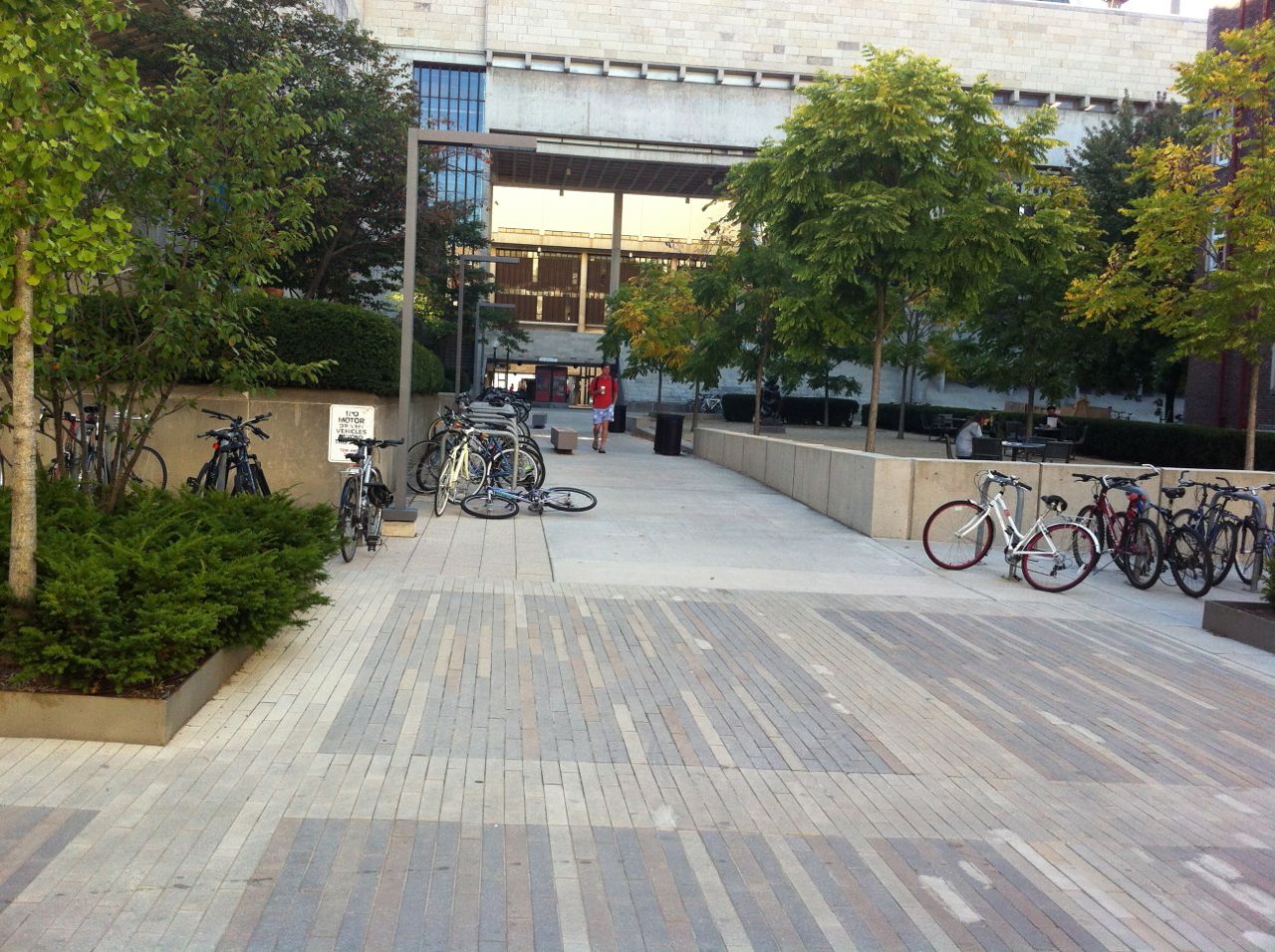
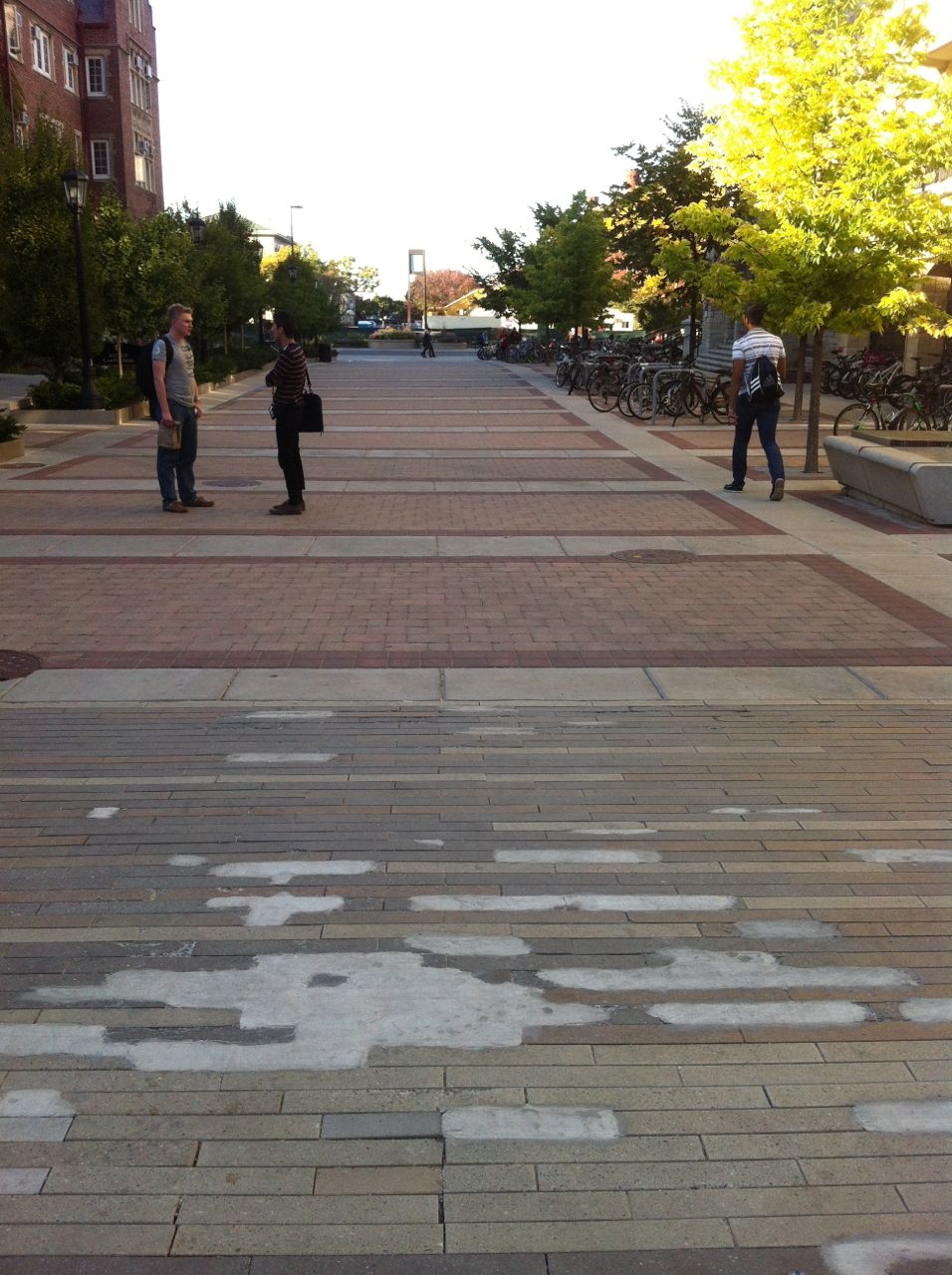
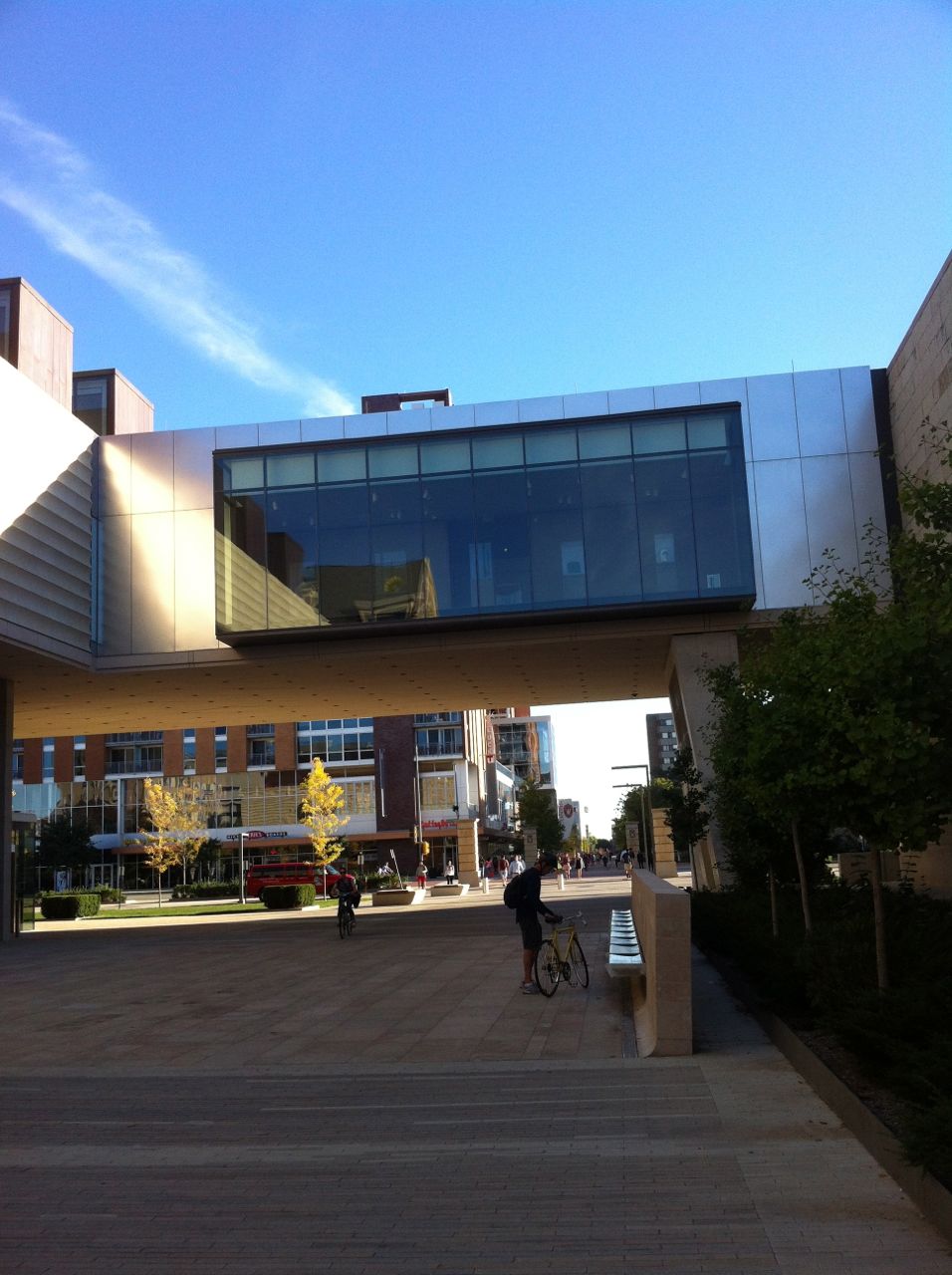
There are two UW-Madison campus story circles, one in the yard of the new Education Bldg on Bascom Hill, the other nearby and older
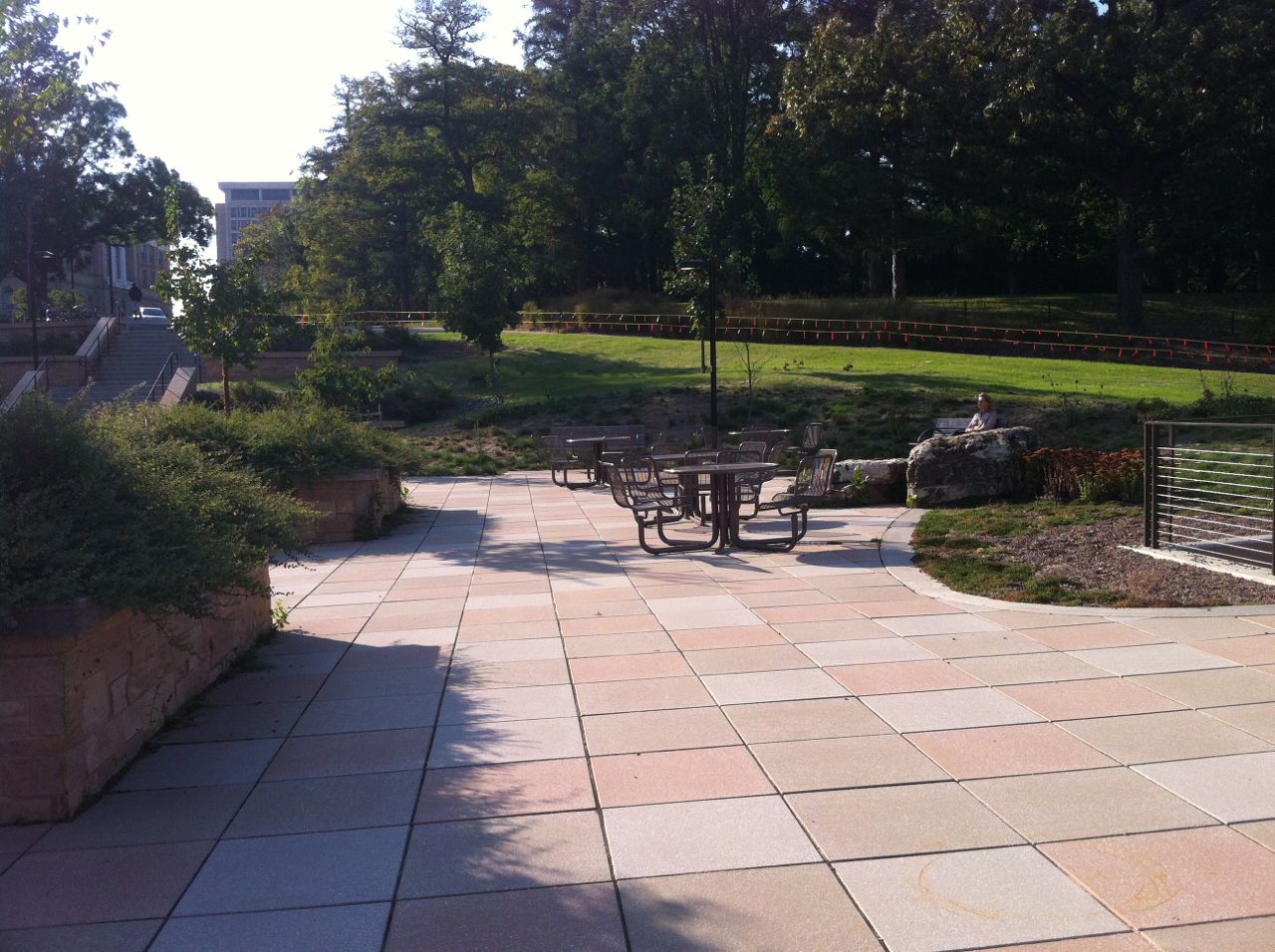
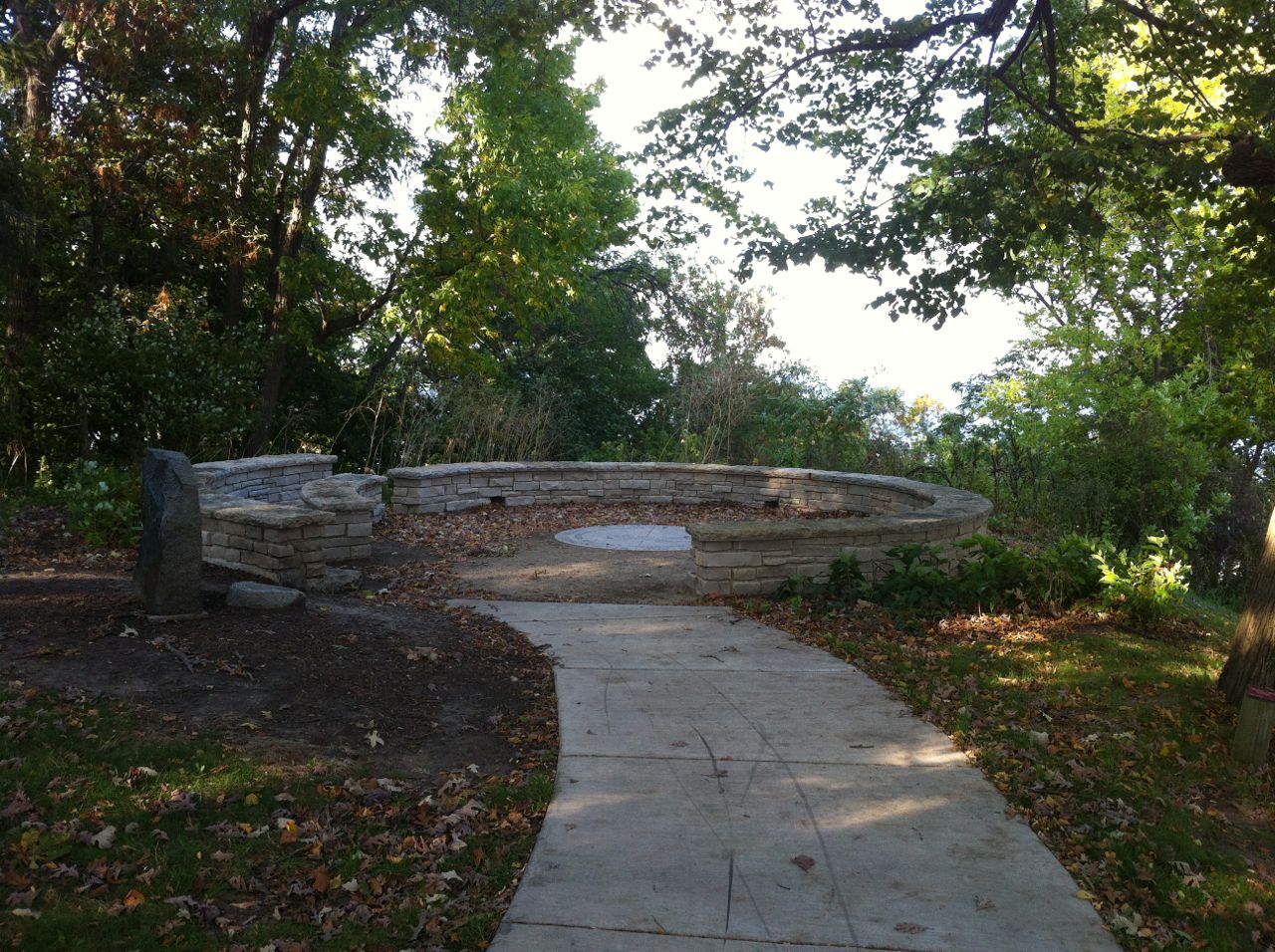
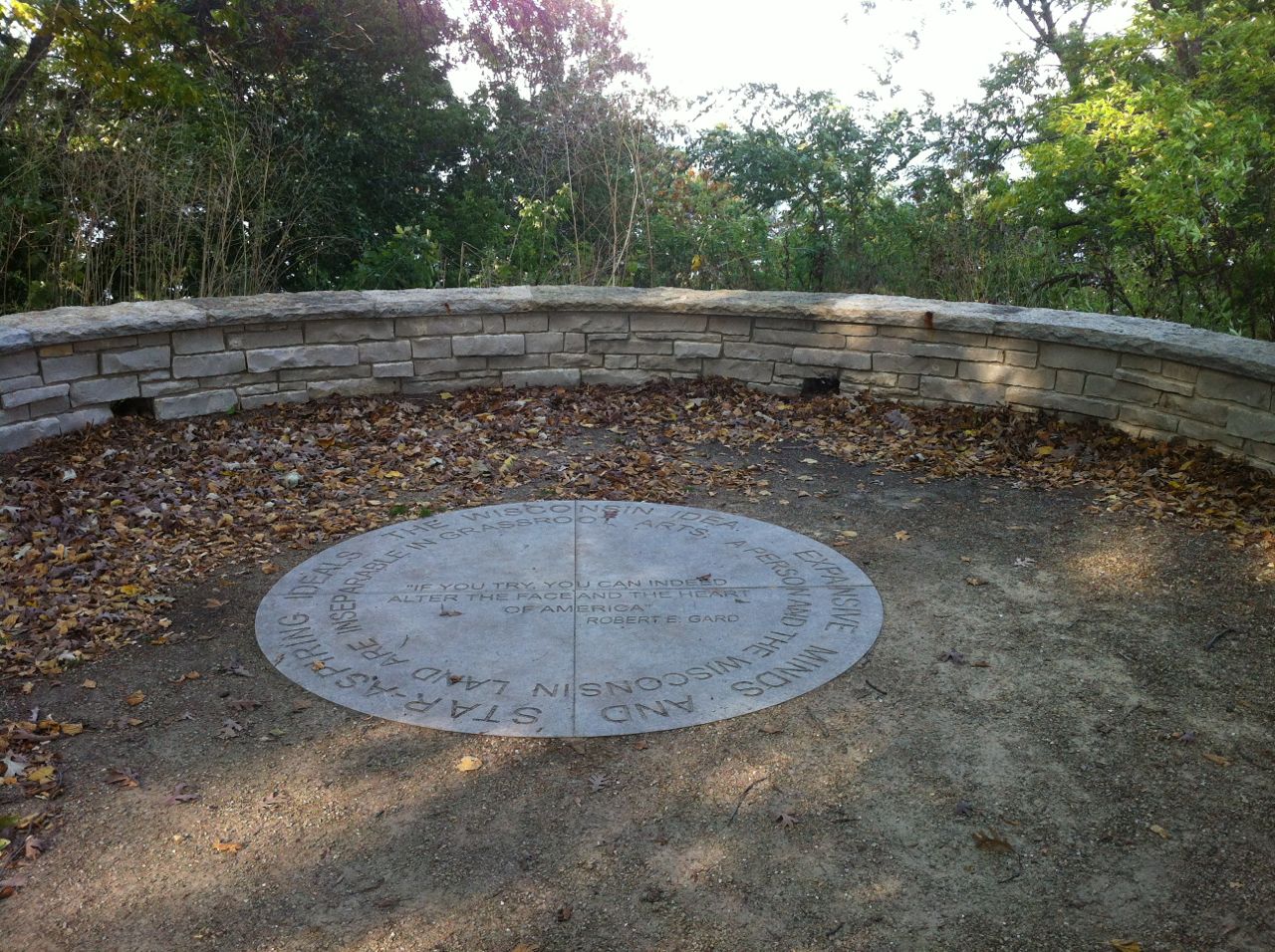
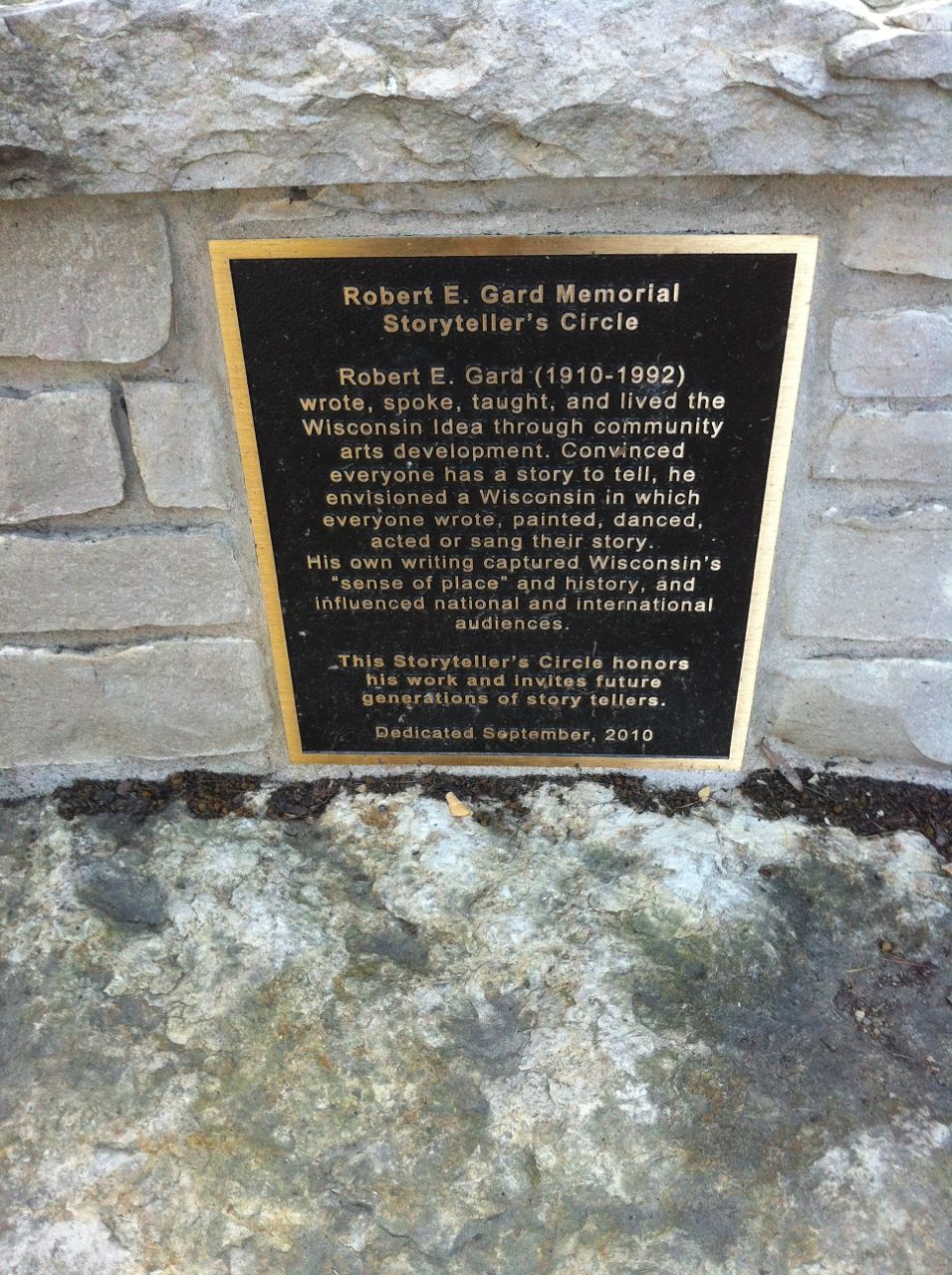
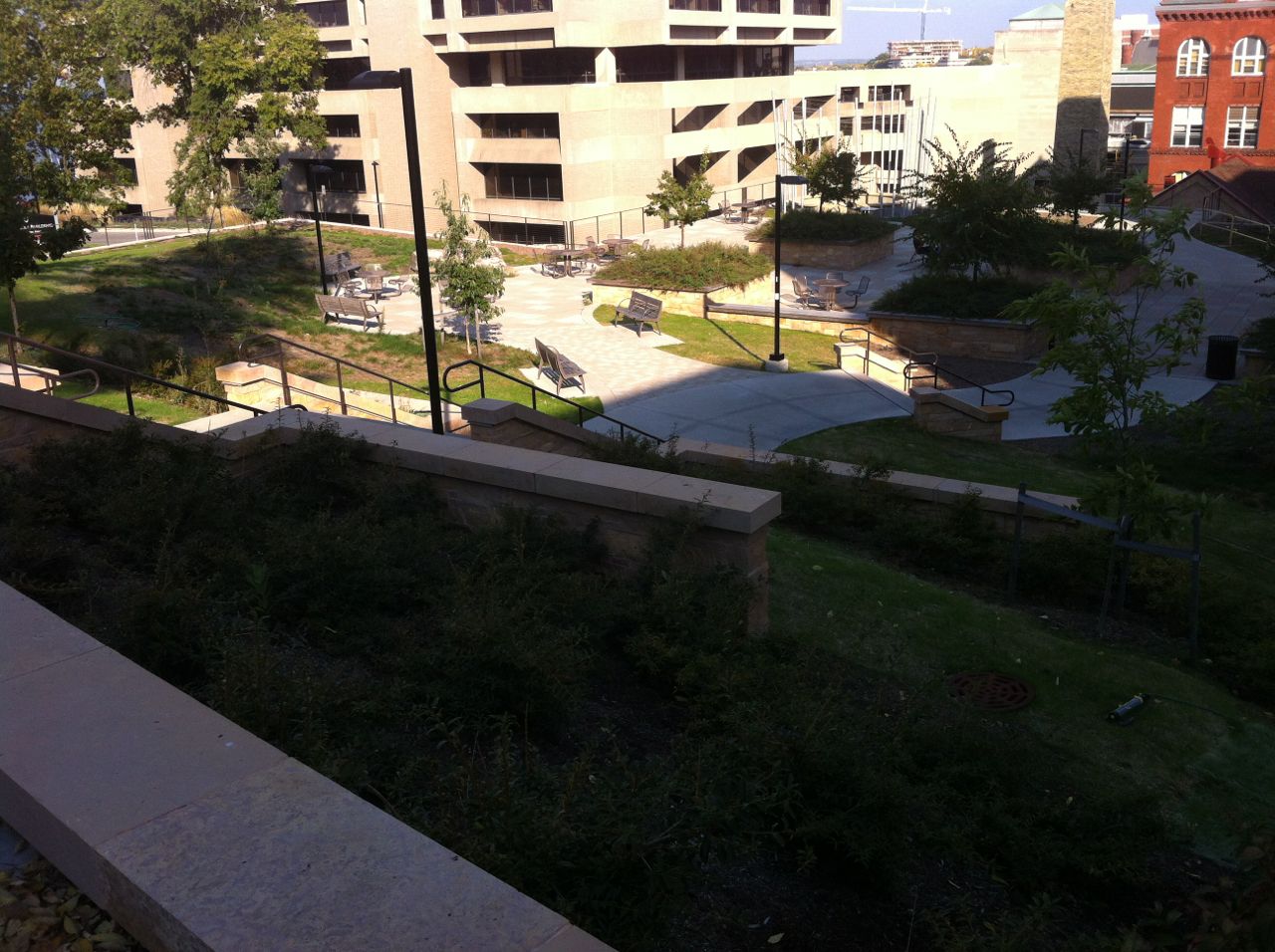
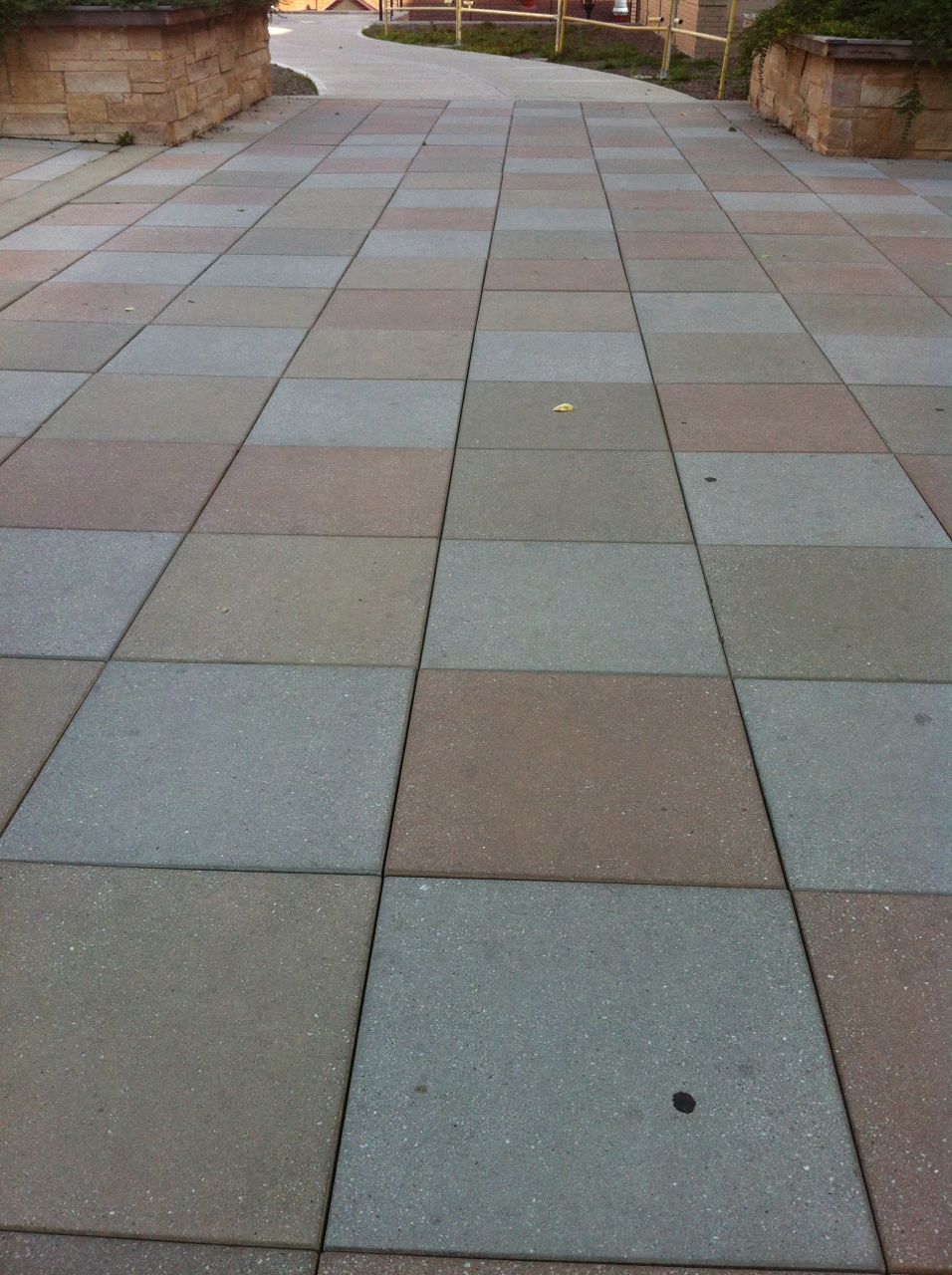
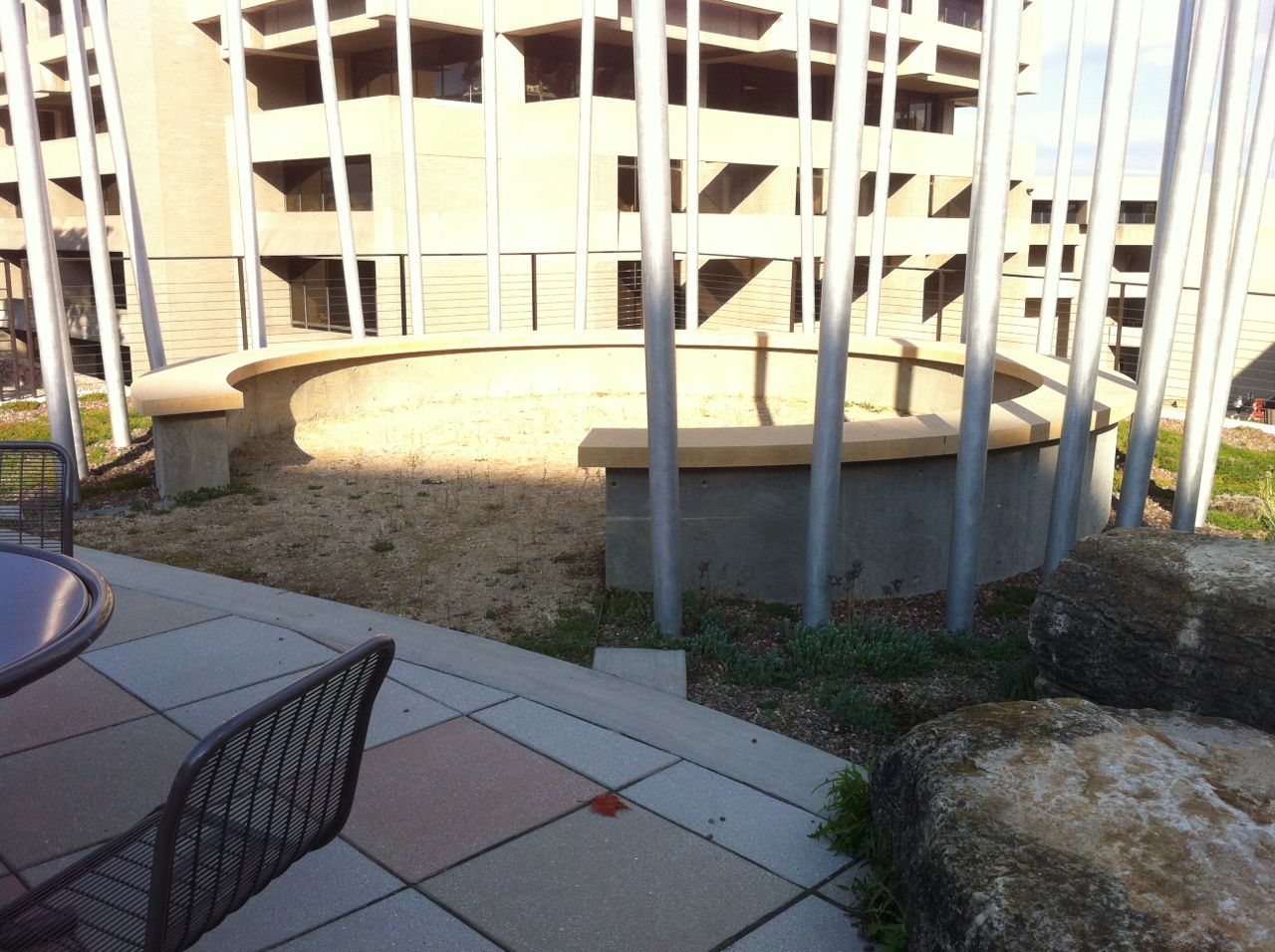
A small courtyard near Badger Market on Charter St shows what can be done with a small courtyard space
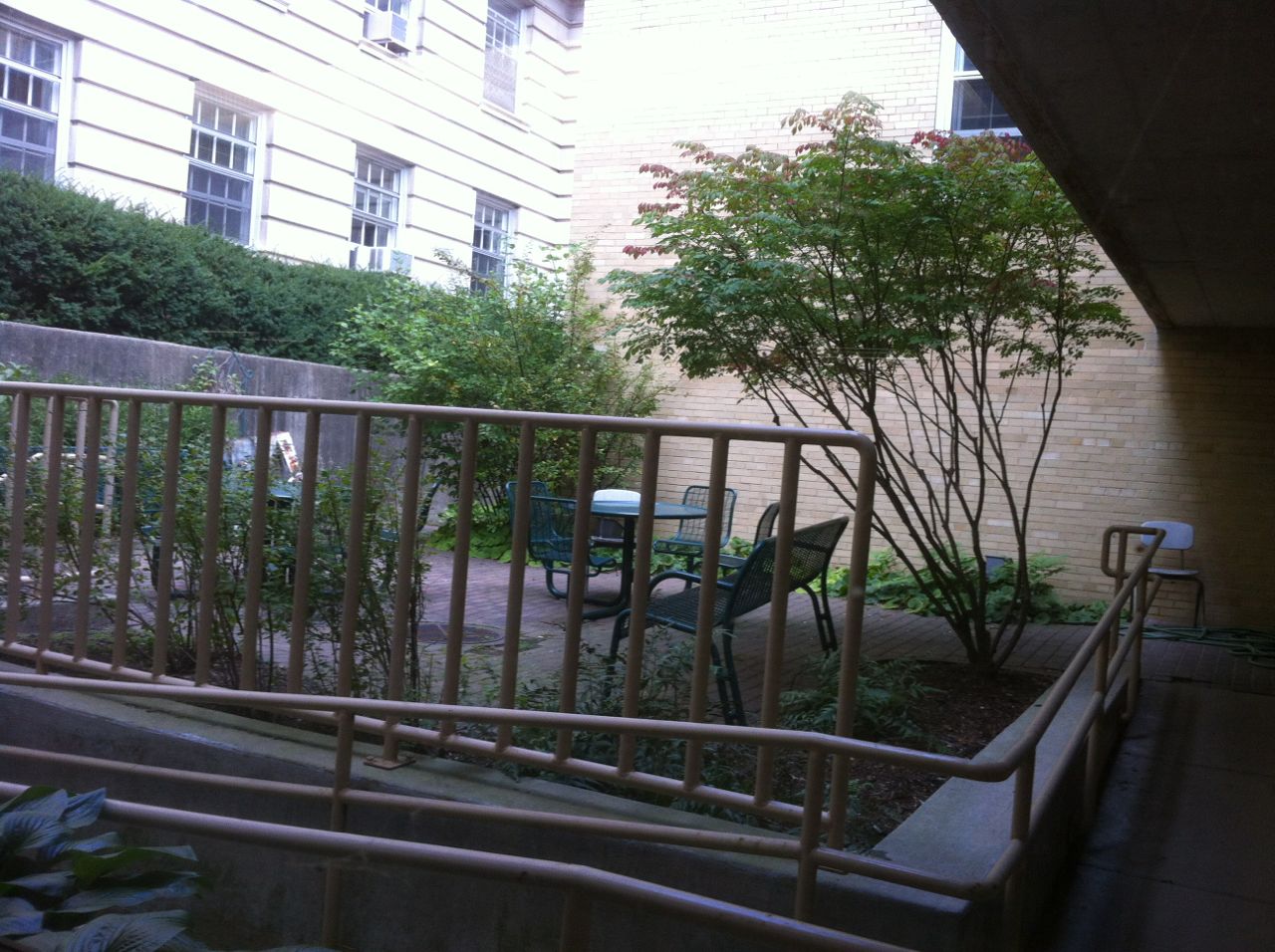
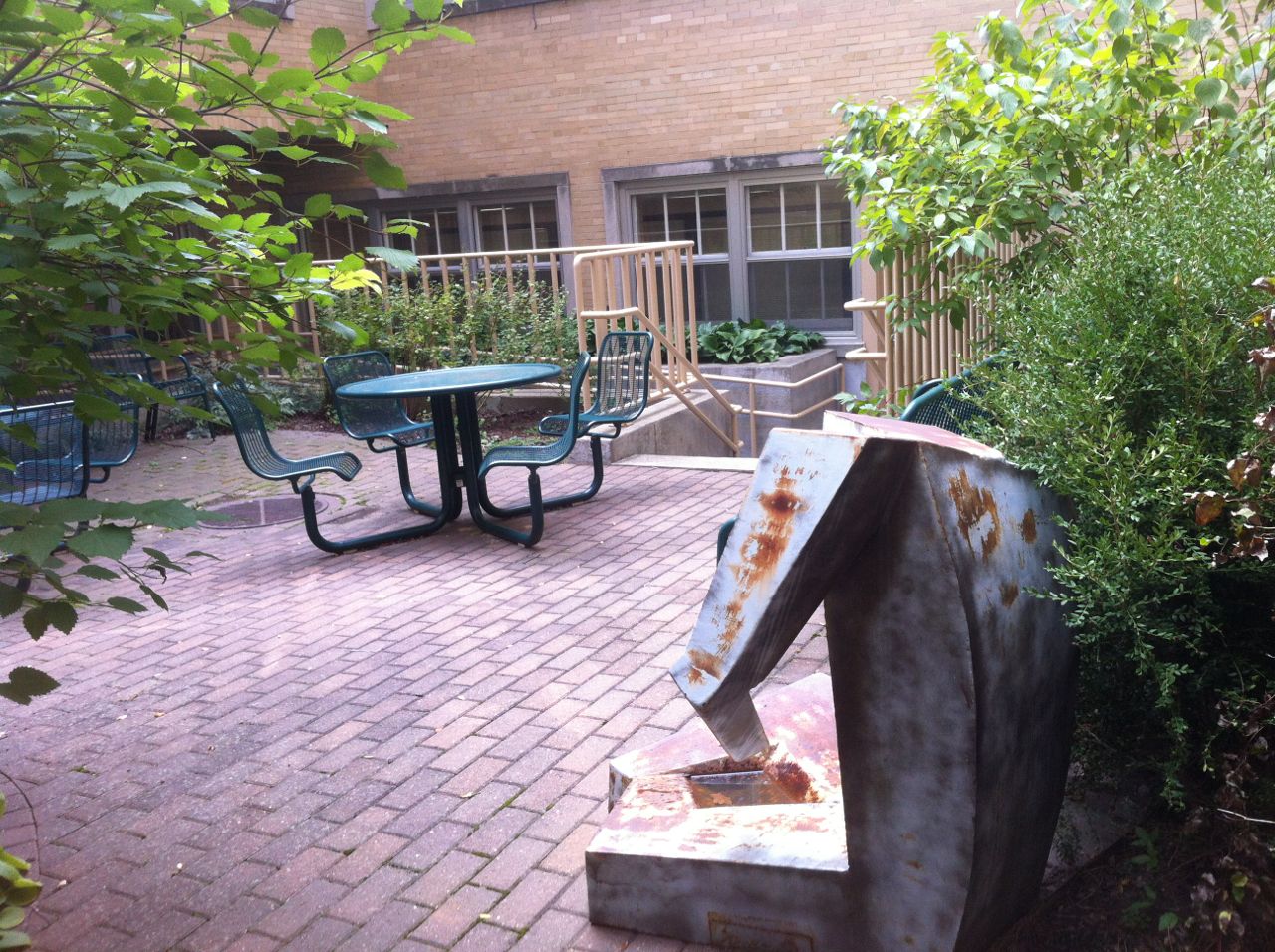
Team
Gary A. Brown, PLA, FASLA Director, Campus Planning & Landscape Architecture Director, Lakeshore Nature Preserve
Rhonda James, PLA, ASLA, Landscape Architect Senior P.608.263.3032 rjames@fpm.wisc.edu
Facilities Planning & Management 610 Walnut Street Suite 919 Madison, WI 53726 Phone: 608-263-3023 Cell: 608-334-2417 Fax: 608-265-3139 gbrown@fpm.wisc.edu
Erin Silva, Associate Scientist, Dept of Agronomy (608)890-1503 emsilva@wisc.edu
Angela Pakes Ahlman, Professor of Practice, College of Engineering, Technical director, WHRP, Manager, RMRC-#G, External relations Coordinator, Office of Sustainability
Mike Vanden Heuvel, Professor, Department of Theatre and Drama, University of Wisconsin-Madison, 821 University Ave., Madison, WI 53706, Chair, Integrated Liberal Studies Program, Affiliate faculty: ILS; Visual Cultures; Celtic Studies; Center for European Studies
Robert Glenn Howard,http://rghoward.com University of Wisconsin -- Madison Chair, Department of Comparative Literature and Folklore Studies, Director, Digital Studies, Professor, Department of Communication Arts
Matthew Kennedy, graduate student, School of Architecture, Columbia University
Photo credits: The image of the buildings is from GoogleMaps. The blackboard image is from OnWisconsin.
Status: Summary of 26 Sep '13 site visit
Interesting, Gary, that you proposed a green roof for the Courtyard back in 2007 (but found it precluded by cost during that remodel). Interesting too to hear you are designing an alumni outdoor space near Red Gym with green gathering places and power- this could be a model for outdoor instructional spaces. Please send me or point me at some design sketches! Love to show the physics alumni and Board of Visitors.
Thanks Erin for your input on low light level organic garden options. Right. We would need a commitment from some people such as Badger Market to care for and use produce, and hygiene oversight. Going truly local for some campus food needs could provide an opportunity for students to get direct experience. Pilot projects demonstrate what is possible and desirable and what is required.
Rhonda, interesting to hear that a cistern was proposed for Birge Hall drainage and greenhouse use. The filtering of rainwater for a research greenhouse may be unnecessary for the outdoor flower garden next to Chamberlin, which BTW has two ponds. I am not expert in natural and artificial filtering to remove bird feces. A 2012 Office of Sustainability report UW campus Metabolism estimates fecal coliform bacteria from the campus drainage system in a one inch rain event raises the near shore concentration above the water quality limit. How much of the bacteria comes from green space and how much from building roofs and pavement and other sources was unknown to the authors. Maybe we should be instrumenting building and parking lot drains with filters anyway to spare the lakes. Or investing in scarecrows on the roofs! I imagine a cistern filled from Birge or Chamberlin could supply the garden. It would have to have overflow drainage and maybe have to be pumped out in the winter depending on the depth if it were out of doors.
Rhonda and Gary, I look forward to some preliminary design visualizations consistent with constraints, and rough cost estimates for the courtyard. The three schemes we discussed (if I may summarize) were:
a) Some 4-5 minimal standard issue UW-Madison metal tables with afixed chairs and metal umbrellas @ around $2600/table, some ornamental trees or shrubs in new planters (nothing so large as to worry folks about roots causing leaks in the roof!) and some upgrade to the default flowers/grasses in place, along with additional bike parking.
b) Additional seating to create a pilot outdoor blended learning space occupying only the lower bit of the sloped roof plus some of the flat portion, seating maybe 30 students, with a mechanism for generating and viewing a common display (white permanent screen +and some electrical power for a mobile projector?) on the tower air vent. This could be an upgrade to option a) by providing some bench seating say on the slope. Do you think some visual delineation of the space could be included? David Macasaet (cc'd here) from Learning Support Services might be interested in providing some input to such a design.
c) More extensive greening with dry seating, partly traditional auditorium style, partly story circle style, terracing the sloped roof providing seating up to load capacity, with a covered stage in the flat area at the bottom, mimicking the auditorium underneath. At this scale, some attention must be given to acoustics. This project could be staged. Some simple benches attached to the concrete to start, greening and electrical power to be added? Maybe we just add more and more standard tables if use warrants?
-Carlsmith
--- 6 Dec 2013 Short term plan from Rhonda [(.pdf): CourtyardShortTermPlan]
